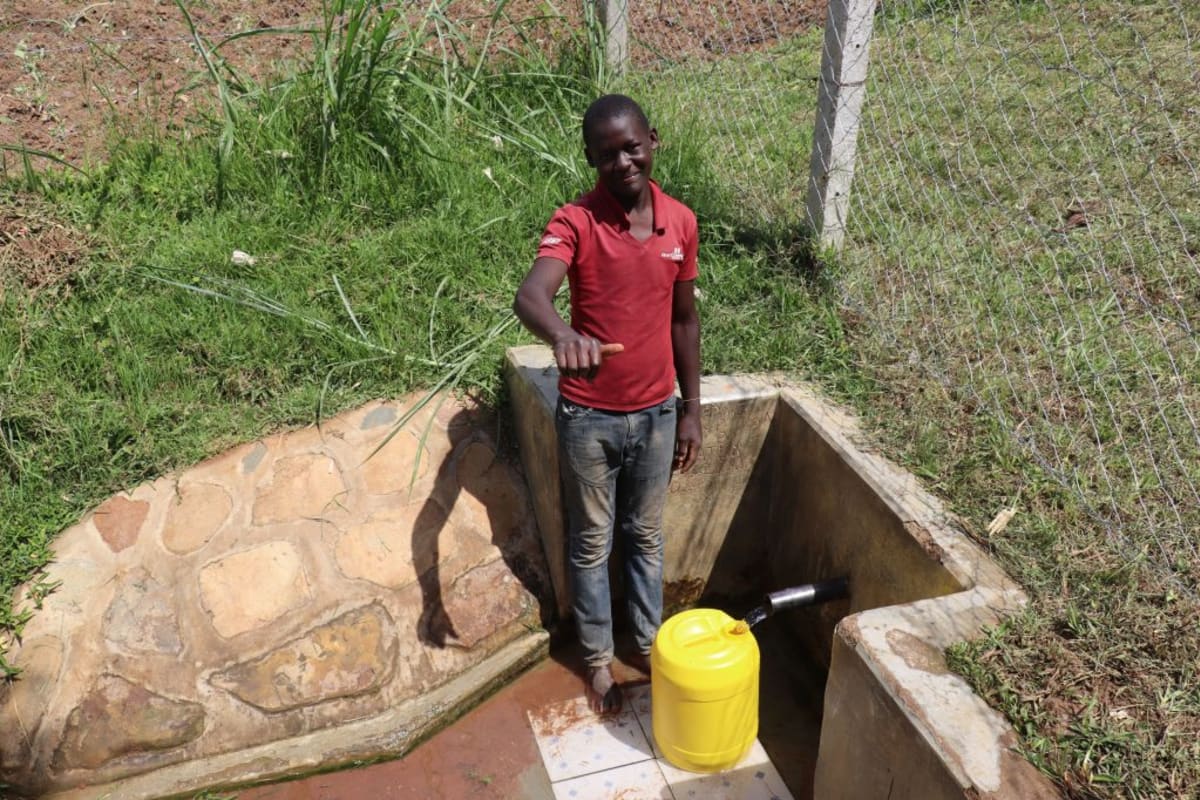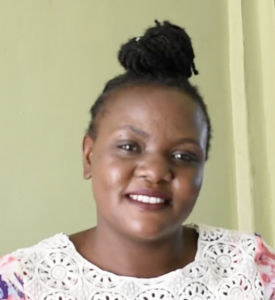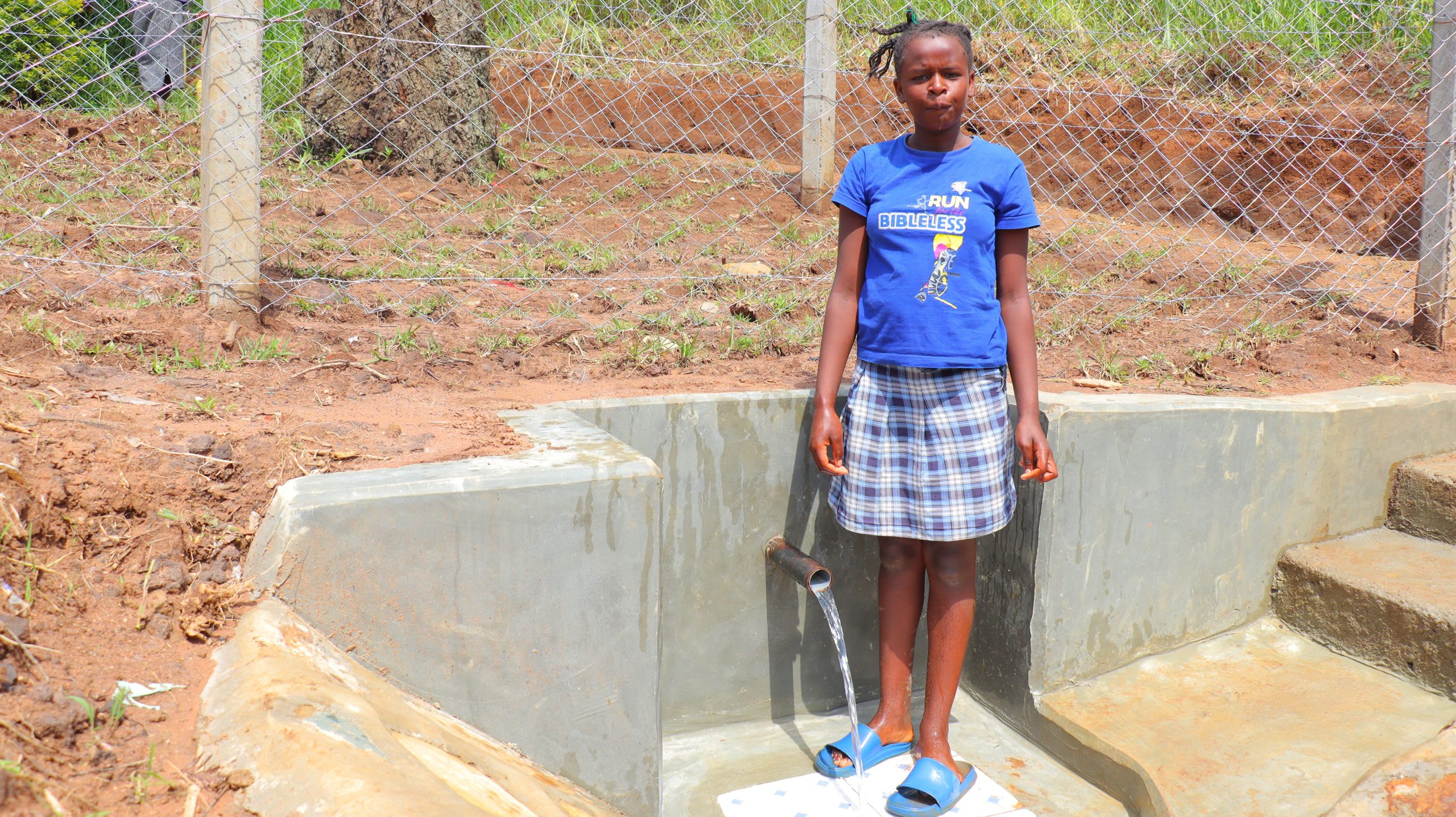The Shilarumwa Community, comprising 420 individuals, faces difficulty obtaining enough water from their unsecured spring. Previous efforts to secure the spring were unsuccessful, resulting in a low amount of water discharged through the pipe. As a result, community members have to wait in long lines, which takes up valuable time that could be spent on other essential tasks.
"Getting water from this water point is always a struggle. There is a queue (line) because of the low discharge. You have to wait until it's your turn to draw water. In the morning, I have to wake up earlier than usual so that I can [go] to fetch water on time and also go to school on time without getting [there] late. Most of the time, I arrive at school on time but [am] very tired. If this water point is improved, I [would] be able to fetch my water on time and not worry about getting late [to] school. This will give me [more] time to concentrate on my studies, " said 12-year-old Vane, pictured below in the white shirt and black pants.

But overcrowding isn't the water point's only problem.
Because this spring was unsuccessfully protected in the past, many contaminants make their way into the water. Field Officer Adelaide Nasimiyu shared, "Most of the users who drank this water untreated suffered from typhoid [or] stomachache issues and diarrhea. This has affected mostly children."

According to the World Health Organization, "Diarrhoeal disease is the second leading cause of death in children under five years old. It is both preventable and treatable. A significant proportion of diarrhoeal disease can be prevented through safe drinking-water and adequate sanitation and hygiene."
Farmer Jane Namwiva (pictured below), 53, describes how the water crisis affects her family, "When the drawing point is flooded, sometimes the dirty water [gets] mixed up with the dirty water. It gets worse if you send children for water because you couldn't be sure [of] the kind of water they have brought home. The water has to be treated before drinking. Sometimes, before we got [the] chlorine dispenser, we drank untreated water, and this [cost] us our health. We suffered from typhoid, stomachache issues, and diarrhea. This made me spend a lot of money on medication."

Protecting the Shilarumwa spring will give people like Vane the energy to put into their education and future. Jane won't have to worry about any water being brought home from the spring. With a properly protected spring, the water is far less likely to be contaminated. Clean, easily accessible water will allow this community to no longer live in fear of illness and give them back the time consumed by water collection.
The Proposed Solution, Determined Together...
At The Water Project, everyone has a part in conversations and solutions. We operate in transparency, believing it benefits everyone. We expect reliability from one another as well as our water solutions. Everyone involved makes this possible through hard work and dedication.
In a joint discovery process, community members determine their most advantageous water solution alongside our technical experts. Read more specifics about this solution on the What We're Building tab of this project page. Then, community members lend their support by collecting needed construction materials (sometimes for months ahead of time!), providing labor alongside our artisans, sheltering and feeding the builders, and supplying additional resources.
Water Access for Everyone
This water project is one piece in a large puzzle. In Kenya, Sierra Leone, and Uganda, we're working toward complete coverage of reliable, maintained water sources that guarantee public access now and in the future within a 30-minute round trip for each community, household, school, and health center. One day, we hope to report that this has been achieved!
Training on Health, Hygiene & More
With the community's input, we've identified topics where training will increase positive health outcomes at personal, household, and community levels. We'll coordinate with them to find the best training date. Some examples of what we train communities on are:
- Improved hygiene, health, and sanitation habits
- Safe water handling, storage & treatment
- Disease prevention and proper handwashing
- Income-generation
- Community leadership, governance, & election of a water committee
- Operation and maintenance of the water point
Chlorine Dispensers
Installing chlorine dispensers is an important piece of our spring protection projects. Protecting a spring provides community members with an improved water source, but it doesn’t prevent contamination once the water is collected and stored. For example, if the water is clean and the container is dirty, the water will become contaminated.
We ensure that each chlorine dispenser is filled with diluted chlorine on a consistent schedule so that people can add pre-measured drops to each container of water they collect. That way, community members can feel even more confident in the quality of their water.




 Protected Spring
Protected Spring
 Rehabilitation Project
Rehabilitation Project































